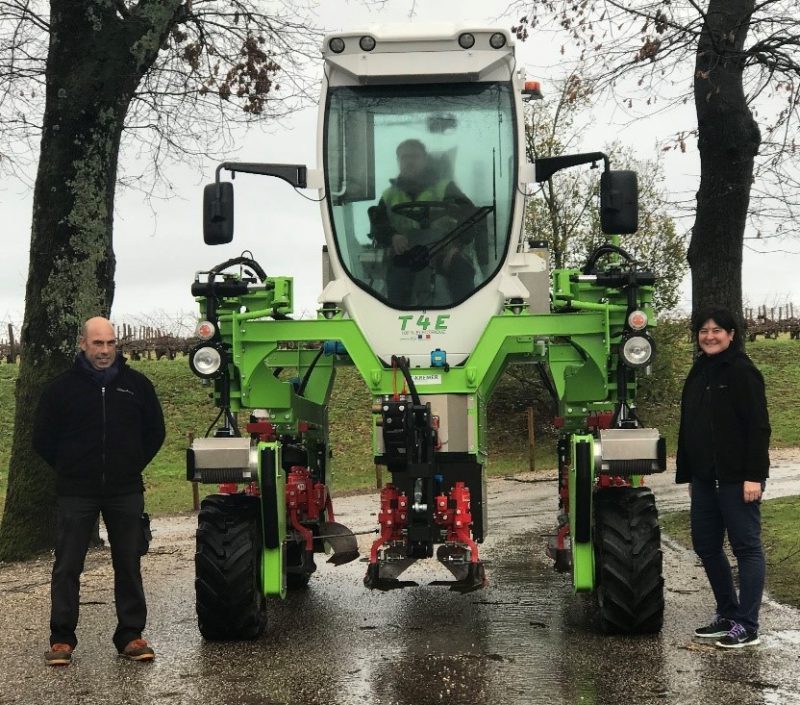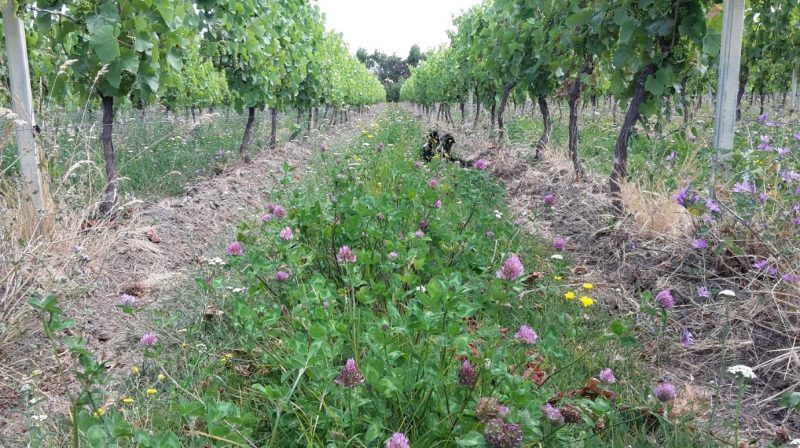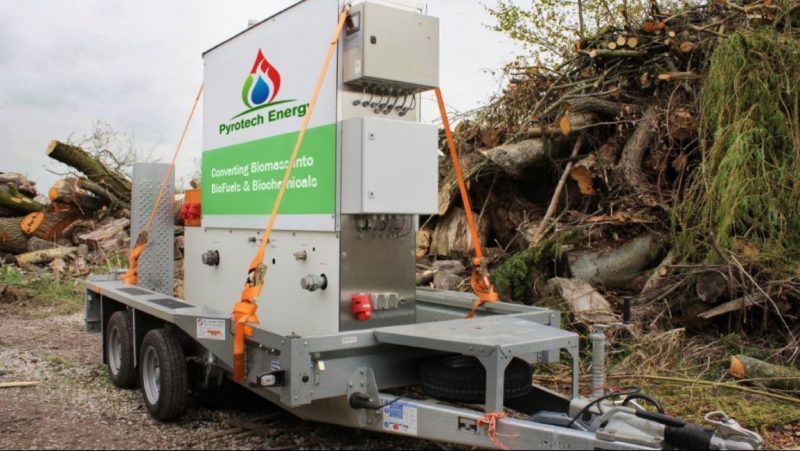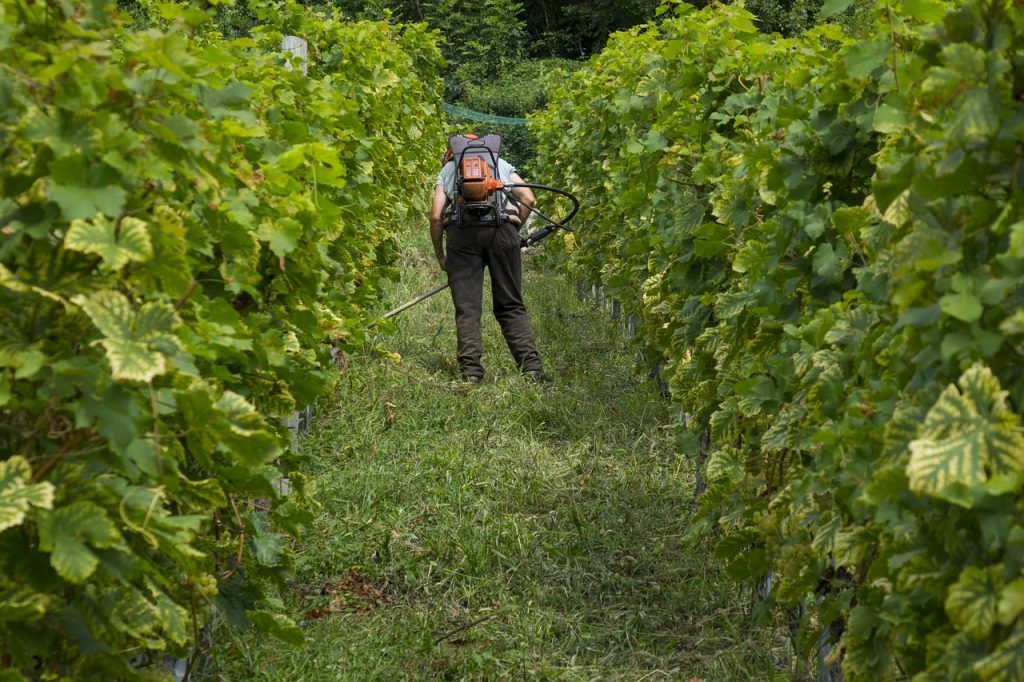By R. Smart, D. Bruer, C. Collins, A. Corsi, I. Jeffrey, C. Karantonis, L. Lockshin, R. Muhlack, D. Oemcke, B. Pike and E. Wilkes.
The aim of this multi-author paper is to encourage the Australian grape and wine sector to engage in a strategy of climate change mitigation.
Introduction
This is of course a step beyond adaptation, and would mean that the industry takes responsibility for reducing or even eliminating its carbon footprint. Such a goal will be in line with the recent release of the 30-year industry plan of achieving carbon neutrality by 2050 (Australian Grape and Wine 2020). This statement makes Australia only the second wine producing country to set such a target, closely following New Zealand. It is also in line with the current global intention to limit temperature increase to 1.5 °C rather than 2.0 ⁰C in this period.
Some producers may see this goal as an unnecessary exercise and expense. Others may consider that it is an appropriate contribution by the Australian grape and wine sector to help avoid an otherwise imminent environmental catastrophe, by comparison to which the recent COVID-19 crisis pales in significance. In a review of scientific projections, David Wallace-Wells (The Uninhabitable Earth, 2019) lists flooded cities, famines caused by crippling droughts and floods, hurricanes and monsoons, wild fires, and deaths by heat wave, air pollution, dengue and other diseases, all leading to stresses on society which have and will increasingly cause economic problems, and perhaps wars and disruption of international trade. He argues that it will be far more expensive to combat climate change later than to begin mitigation now.
Richard Smart calls “the wine industry the canary in the coal mine for climate change in agriculture” because it is so climate sensitive. We see this by comparison of climate, especially temperature, to wine style and quality, between and within present Australian regions (see Smart and Dry 1980). The recently published Australia’s Wine Future, A Climate Atlas (Remenyl et al. 2020) demonstrates convincingly the projected future climate changes. As an example, within around 40 years the Barossa Valley is predicted to be as hot as the Riverland is now, and the future of the Riverland will be to change to varieties more suited to heat. Australia is a very large and flat island, already prone to high temperatures. One can easily argue that it is in the Australian wine sector’s best interest to help mitigate against climate change, since the 2020 bushfires demonstrated physical damage to vineyards and wineries, and widespread remote-from-source smoke taint.
Calculating carbon footprints
Life Cycle Assessment (LCA) is the most common method of determining the ”carbon footprint” of grape and wine production in a so-called “cradle to grave approach”, as was most recently performed for the Australian grape and wine sector by AWRI (Abbott et al. 2016). Carbon neutrality is when the sum of all of the inputs into a bottle of wine after purchase and disposal by the consumer have net zero carbon footprint. The AWRI study showed that of the 1.16 kg CO2e/L lifecycle carbon impacts embedded in a bottle of wine, the major components in both domestic and export markets, in approximate order are packaging, transport, energy (electricity and LPG) in the winery and energy (electricity and diesel) in the vineyard. Domestic cask wine was found to have the lowest carbon footprint due to lower carbon embedded in packaging and more efficient transportation (mass of wine per volume moved).
Exported bulk wine has lower embedded carbon than exported bottled wine due to efficiencies in sea transportation but must still be eventually packaged. The carbon embedded in packaging can vary widely, depending on where glass is produced and the energy required for transportation of that glass to the point of bottling.
Energy sources are critical in wineries and viticulture, and grid supplies are less carbon intense in Tasmania than mainland Australia for example. For Australia, renewable sources of energy like wind and solar especially will significantly reduce the energy carbon footprint, and some state energy grids, and individual wineries have made these investments.
Vineyard carbon uptake and emissions
Studies in north east Italy show that the net carbon uptake by vineyards is of the order of 0.8-0.9 t carbon per ha, of which 20-25% is harvested as crop, 20% as shoots and leaves, and 20% as storage in the permanent structure growth (Pitacco and Meggio 2015). The net carbon uptake of Australian vineyards in warm to hot sunny regions grown with irrigation is likely higher but unknown. Vineyard carbon uptake is obviously solar powered and renewable, occurring every growing season. Of the biomass, winter prunings can be also used as alternate energy sources (see below).
The major components of vineyard emissions are diesel fuel, electricity, chemicals and fertilisers. Reduction strategies include management practices such as reduced tractor passes for spraying and cultivation, targeted nitrogen application and deficit irrigation. Examples of future transitions are electric tractors (Figure 1), presently being commercially used in European vineyards, and diesel sourced as bio-diesel.

Nitrogen fertilisers have substantial carbon footprint in manufacture, and can also emit nitrous oxide NO2, a more powerful greenhouse gas than CO2. An alternative is grow-your-own N fertiliser (and organic matter) using legumes sown in alternate mid-rows over a shallow buried dripper line using the Amisfield method (Smart, 2019, Figure 2). This method has been used in an organic vineyard in Central Otago, New Zealand, to find alternative nitrogen sources to those from animals, and now has application to reduce a vineyard’s carbon footprint.

There is currently increased awareness of the possibility of using agricultural waste as a biomass source for renewable electricity generation, for example by the Australian Clean Energy Council. Prunings are around 20% of the crop weight and their collection and processing from the vineyard can be mechanised. Prunings can be collected by tractor drawn balers (Figure 3) and then stored under cover for air drying, before shredding and processing (Bisaglia and Romano, 2020). Further, removal from the vineyard of prunings and diseased plants can help in trunk disease control.

The thermal and chemical properties of vine prunings indicate that they can be used in combustion, pyrolysis and gasification technologies; all of these processes release CO2 to the atmosphere. However, if treated by slow pyrolysis prunings can alternatively be converted to biochar before incorporation in soil, which is a form of sequestration, as biochar is a very stable form of carbon. The carbon is effectively locked away, whereas if vineyard or winery sourced biomass are composted or incorporated in vineyards’ soils they will eventually decompose, leading to emission of carbon dioxide to the atmosphere. Biochar can be an effective soil amendment, can increase available nutrients for plant growth as well as aid water retention, and can reduce emissions of greenhouse gases, methane and nitrous oxide from the soil (Marshall et al. 2019). However application to calcareous soils may require supplemental P fertiliser (Marks et al. 2014).
Winery carbon emissions
Emissions from winemaking constitute 17% of the wine sector carbon footprint, with electricity making the largest contribution (at 82% of winemaking emissions). In 2019, only 24% of Australia’s electricity was supplied by renewable sources (comprising of wind, hydro, solar and bioenergy) with the remaining 76% supplied by fossil fuels (Clean Energy Council, 2020). Replacing grid-sourced electricity with renewables solar and wind will have a major impact on the winery carbon footprint.
In most wineries, refrigeration and air conditioning will be responsible for the majority of electricity consumption (often at 50-70% of total site demand), and so improvements to refrigeration efficiency and performance are among the best opportunities within the winery to mitigate carbon emissions. Changes in assumptions on the requirements for cooling can save significant energy.
Even small increases in the temperature of the cooling liquid used to refrigerate wine tanks can have very significant energy saving with little or no detriment to wine quality, without the need to change infrastructure.
However, energy efficiency opportunities can be found in other areas also, including pumps and electric drives, air compression, hot water generation and wastewater treatment (Muhlack et al. 2009). Improvements in any of these areas will reduce energy demand and will ultimately lead to operating cost savings as well as carbon mitigation, and so for maximum effect should be considered in parallel with efforts to identify and implement renewable carbon-friendly energy sources.
Bioenergy is one such renewable carbon-friendly energy source. Wineries generate significant quantities of renewable biomass waste including grape marc, grape stalks (about 2% of crop weight) and wastewater sludge. Marc may be composted and used as mulch (which eventually emits CO2 to the atmosphere on decomposition), or processed further to extract additional materials such as beverage spirit and tartaric acid (Muhlack et al. 2018).
An alternative approach would be to utilise these materials for bioenergy in the form of renewable electricity and transport fuels. This bioenergy valorisation could be achieved with a range of alternative technologies including thermal processes where electricity is the end product (such as combustion, gasification and pyrolysis), or by biological processes such as anaerobic digestion to produce biogas or by lignocellulosic methods that produce bioethanol. Studies by Zhang et al. (2017) showed that for Australia pyrolysis provided a better return on investment than the combustion of marc, and that both pyrolysis and composting released less greenhouse gases than combustion.
Thermal processing technologies in particular are mature and proven in other agricultural sectors such as forestry and sugar, whilst anaerobic digestion is well established in landfill and wastewater treatment with numerous systems in operation across Australia (Muhlack et al. 2013). A number of wineries already employ anaerobic digestion for wastewater treatment and could explore this technology for bioenergy production. In addition, combustion biomass processing coupled with Organic Rankine Cycle (ORC) engines, and gasification plants that direct biogas to an internal combustion engine are well suited to smaller installations that would be necessary for winery use. Both of these methods require the biomass to be dried before processing, which improves overall heating efficiency and allows for safe long term storage of the feedstock.
Pyrolysis (which involves various temperatures, in a low-oxygen atmosphere) offers versatility and can target the production of biogas, bioliquids and/or biochar depending on the operating conditions used (Muhlack et al. 2018). Pyrolysis today can be performed at relatively small scale and at remote locations like wineries (Figure 4) which in turn reduces transport and handling costs of biomass (Lucian & Fiori, 2017).

Wine fermentation results in carbon dioxide emissions of approximately 56L CO₂ per litre of wine (Boulton et al. 2013), which is equivalent to 0.11kg CO2e/L. If these fermentation emissions were captured and used to eliminate importation of carbon dioxide into wineries, it could result in a 9.5% reduction in carbon emissions associated with Australian domestic bottled wine (representing more than half of the emissions associated with winemaking). So, notwithstanding the debate on whether biogenic emissions should be included within wine LCA, sequestration of fermentation emissions present a significant mitigation opportunity.
Packaging, the glass bottle problem
Can we imagine a modern consumer product which has used the same packaging for around 400 years? Yes we can, wine! The modern glass wine bottle was invented in the 1630’s by Englishman Sir Kenelm Digby. A recently uncovered Edinburgh glassworks was producing a million wine and whisky bottles a week in 1770!
The need for more carbon friendly packaging than traditional 750ml bottles is clear because glass bottles used and recycled at the current rate account for about 68% of the current carbon emissions in LCA. Improving the recycle rate is essential, perhaps to include in-store container deposit systems? Reducing the thickness of glass, eliminating punts and using shorter necks are useful, and increasing the volume of wine per mass of glass through larger formats is an opportunity in this regard.
Alternative packaging formats like the bag-in-box, pouches, Tetra Pak, PET and aluminium cans all offer opportunities to reduce both the mass and energy embedded in a glass bottle of wine, although recycling and reuse possibilities of alternatives need study. Some of these alternate containers can be easily adapted to smaller serving sizes, which will suit a greater variety of consumption occasions and be less likely to encourage greater consumption. The carbon footprint for a 4L cask is about half that of using a standard glass bottle. Using 2L casks adds only marginally to the carbon cost per litre.
New models of delivery to trade like large casks and reusable kegs represent a move towards much higher volume to packaging ratios that drive lower embedded energy in packaging and energy from transportation.
The Australian wine industry has been innovative with the invention of the bag-in-box and by rapidly moving to screwcaps in 2000 after being the first to trial them in the 1970’s. Barokes of Australia were among the earliest to create canned wine technology in 2000’s,which is now spreading beyond low-end wines to higher value luxury brands (Wilcox 2020).
But the Australian industry has been reluctant to embrace other alternatives for fear of alienating consumers; just what are consumer preferences in alternate packaging is a subject worthy of study. The model for study would be: understanding what consumers say they want, and testing what they do when exposed to their preferred as well as other options; then showing wineries what consumers are likely to purchase and under which circumstances. In this case the consumer preferences might lead the winemaker to a low carbon future and the industry needs to be able to heed that voice. Other alternate packages like cans, PET bottles, pouches and Tetra Paks are appearing in wine stores internationally, and they may require more testing for wine conservation ability as was done for screwcaps before adoption by industry.
Now is the time to tell the story of lightweight glass, canned wine, PET, larger format bottles, pouches, Tetra Paks and other formats (with validating LCA and recycling studies) for reducing wines impact on the environment. One issue is that it will be difficult to change perceptions about the viability of non-glass low carbon packaging for anyone considering aging wine. However, we know that most wine (90%, Thatch and Camillo, 2018) is consumed within two weeks of purchase and only 6% is purchased for ageing. We also know that most inexpensive wine is not aged at all, but some does sit around warehouses or homes for quite a while. So maybe the first marketing campaigns should look at wines in the lower price tiers, the drink-now market, which is around 50% of volume for Australia, USA and UK. Proper messaging will be necessary for consumers to understand the attributes of non-glass packaging.
Conclusion
This review aimed to show the Australian grape and wine sector that it is possible to begin conversion now to a carbon neutral future. Much of the technology is developed and now commercially available, what is required is the will to adopt the strategy. Use of solar energy to create electricity is easy for most Australian companies and the economics are attractive; for other options such as biomass conversion the economics must be studied as well as optimum procedures developed especially for pomace. The ‘elephant in the room’ of glass packaging can be approached through research and trial of alternative packaging using drink-now wines.
Carbon neutrality is a possibility for the Australian grape and wine sector, and the recent commitment of the industry 30-year plan is commendable and achievable, and will please environmentally-conscious consumers.
Authors
Dr Richard Smart is an international consultant with Smart Viticulture, with a 50+ year interest in climate, grapes and wine.
David Bruer is the owner of Temple Bruer at Langhorne Creek, a committed organic and carbon conscious operation with vineyards also in Eden Valley and the Riverland.
Dr Cassandra Collins is an Associate Professor at the University of Adelaide, with over 20 years’ experience in viticulture and a research focus on improving vineyard management. [email protected]
Dr Armando Maria Corsi is an Associate Professor of Wine Business at the University of Adelaide Business School, experienced in consumer behaviour towards wine.
Ian Jeffery is a retired consultant engineer with 45 + years’ experience in wine (Worley, Pernod Ricard), Sugar & METS (Mining Equipment Technical Services).
Christos Karantonis is the director and founder of Pyrotech Energy, (Australia) interested in sustainable environmental practises and energy application.
Dr Larry Lockshin is Professor of Wine Marketing at the Ehrenberg Bass Institute for Marketing Science at the University of South Australia and has been studying wine purchase behaviour, packaging and pricing for wine and food products for the last 30 years.
Dr Richard Muhlack is a Senior Lecturer in the School of Agriculture Food and Wine at The University of Adelaide with 20 years experience in winery process engineering.
Dr Darren Oemcke is a co-founder of Hydra Consulting and has extensive experience in the wine sector from engineering, LCA studies through to marketing.
Mr Benjamin Pike is an Associate Lecturer for the School of Agriculture Food and Wine, University of Adelaide, with a particular interest in sustainable vineyard management.
Dr Eric Wilkes is Group Manager for Commercial Services at the Australian Wine Research Institute with extensive experience in the wine production sector and a long term interest in efficient and environmentally conscious production systems.
References
Abbott, T., Longbottom, M., Wilkes, E., Johnson, D. (2016) Assessing the environmental credentials of Australian wine, Wine and Viticulture Journal, Jan/Feb 2016.
Australian Grape and Wine (2020). Vision 2050, April 2020 https://agw.org.au/assets/VISION-2050/AGW-Vision2050-F.pdf
Bisaglia, C. and Romano, E. (2020). A compact mechanisation system to recover vineyard prunings for energy purposes. Wine and Vitic. Journal, 41-46.
Boulton, R. B., Singleton, V. L., Bisson, L. F., & Kunkee, R. E. (2013). Principles and practices of winemaking. Springer Science & Business Media.
Lucian, M. and Fiori, L (2016). Hydrothermal Carbonization of Waste Biomass: Process Design, Modeling, Energy Efficiency and Cost Analysis. Energies 10(20):211
Marks, E.A., Alcaniz, J.M. and X.Domene. (2014). Unintended effects of biochars on short-term plant growth in a calcareous soil. Plant Soil 385: 87-105.
Marshall, J. A., Muhlack, R., Morton, B. J., Dunnigan, L., Chittleborough, D., & Kwong, C. W. (2019) Pyrolysis temperature effects on biochar water interactions and application for improved water holding capacity in vineyard soils, Soil Systems, 3(2), 27
Muhlack, R., Smith, P., Pretorius, I. (2009) Engineering renewable energy resources for a carbon constrained world. Australian and New Zealand Grapegrower and Winemaker November 2009, 82-84
Muhlack, R., Forsyth, K., Scrimgeour, N., Godden, P. (2013) There’s gotta be a buck in those organic by-products. Australian & New Zealand Grapegrower & Winemaker, 599, 80-82
Muhlack, R.A., Portumathi, R., Jeffery, D.W. (2018) Sustainable wineries through waste valorisation: A review of grape marc utilisation for value-added products. Waste Management, 72, 99-118
Pitacco, A and Meggio, F. (2015). Carbon budget of the vineyard – A new feature of sustainability. Bio Web of Conferences 5, 01024, 1-3.
Remenyl, T. A.,Rollins, D.A.,Love, P.T., Earl, N.O.,Bindoff, N.L. and Harris, R.M.B. (2020). Australia’s Wine Future. A Climate Atlas. 487 pp. Available as a pdf. (www.wineaustralia.com/climate-atlas)
Smart, R.E and Dry, P.R. (1980). A climatic classification for Australian viticultural regions. Australian & New Zealand Grapegrower & Winemaker 196, 8-12.
Smart, R. (2019). Making organic vineyards sustainable: the Amisfield approach. Wine Business Monthly (US), February 2019, p.160-165.
Thatch, L. and Camillo, A (2018). A Snapshot of the American Wine Consumer in 2018 Wine Business.com, December 2018 accesses June 2020: www.winebusiness.com/news/?go=getArticle&dataId=207060
Wallace-Wells, David. (2019). The Uninhabitable Earth. A story of the future. Penguin. UK.
Wilcox, K. (2020). The Evolution of Premium Canned Wine. SevenFifty Daily, May, 1-9.
Zang, N., Hoadley, A., Patel, J., Lim, S. and Li C. (2017). Sustainable options for the utilization of solid residues from wine production.
Waste Management 60, 173-183.
This article was originally published in the September issue of The Australian & New Zealand Grapegrower & Winemaker. To find out more about our monthly magazine, or to subscribe, click here!
Are you a Daily Wine News subscriber? If not, click here to join our mailing list. It’s free!





















